Input interpretation

3-allyloxy-1, 2-propanediol
Chemical names and formulas
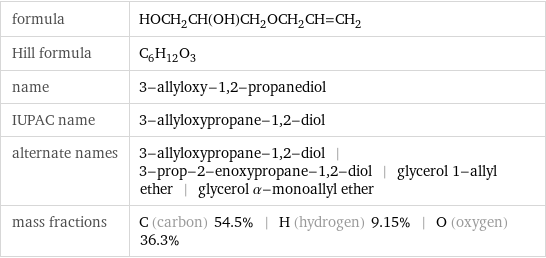
formula | HOCH_2CH(OH)CH_2OCH_2CH=CH_2 Hill formula | C_6H_12O_3 name | 3-allyloxy-1, 2-propanediol IUPAC name | 3-allyloxypropane-1, 2-diol alternate names | 3-allyloxypropane-1, 2-diol | 3-prop-2-enoxypropane-1, 2-diol | glycerol 1-allyl ether | glycerol α-monoallyl ether mass fractions | C (carbon) 54.5% | H (hydrogen) 9.15% | O (oxygen) 36.3%
Lewis structure
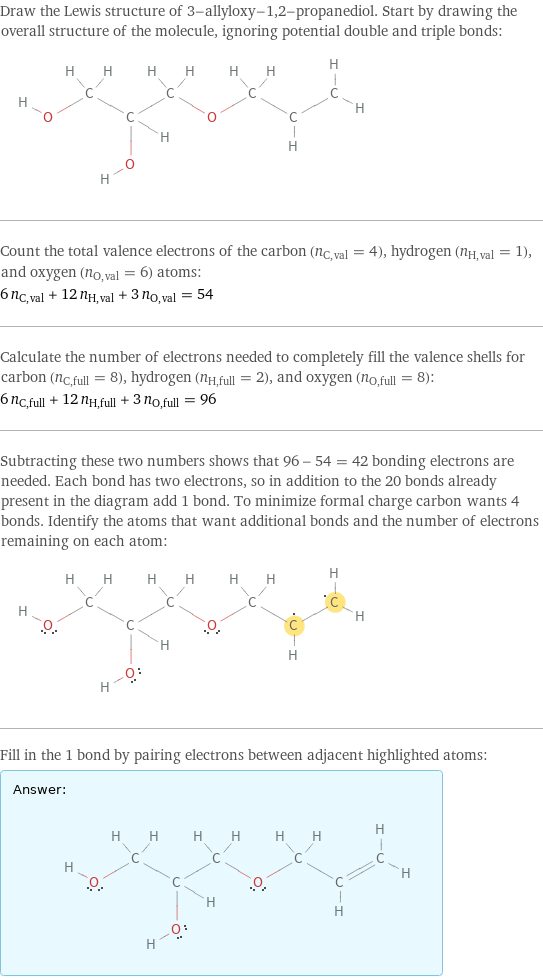
Draw the Lewis structure of 3-allyloxy-1, 2-propanediol. Start by drawing the overall structure of the molecule, ignoring potential double and triple bonds: Count the total valence electrons of the carbon (n_C, val = 4), hydrogen (n_H, val = 1), and oxygen (n_O, val = 6) atoms: 6 n_C, val + 12 n_H, val + 3 n_O, val = 54 Calculate the number of electrons needed to completely fill the valence shells for carbon (n_C, full = 8), hydrogen (n_H, full = 2), and oxygen (n_O, full = 8): 6 n_C, full + 12 n_H, full + 3 n_O, full = 96 Subtracting these two numbers shows that 96 - 54 = 42 bonding electrons are needed. Each bond has two electrons, so in addition to the 20 bonds already present in the diagram add 1 bond. To minimize formal charge carbon wants 4 bonds. Identify the atoms that want additional bonds and the number of electrons remaining on each atom: Fill in the 1 bond by pairing electrons between adjacent highlighted atoms: Answer: | |
3D structure
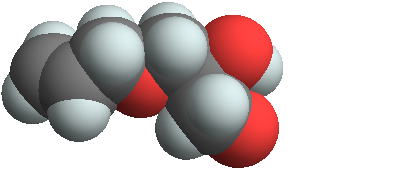
3D structure
Basic properties
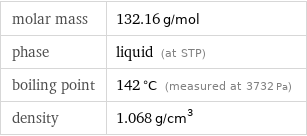
molar mass | 132.16 g/mol phase | liquid (at STP) boiling point | 142 °C (measured at 3732 Pa) density | 1.068 g/cm^3
Units

Liquid properties (at STP)

density | 1.068 g/cm^3 refractive index | 1.462
Units

Chemical identifiers
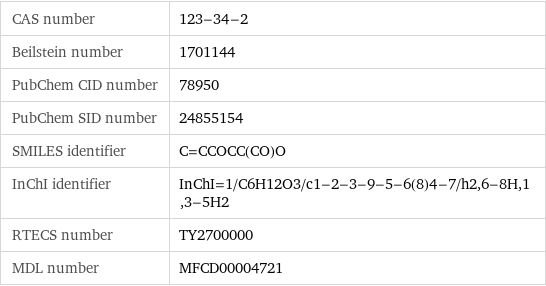
CAS number | 123-34-2 Beilstein number | 1701144 PubChem CID number | 78950 PubChem SID number | 24855154 SMILES identifier | C=CCOCC(CO)O InChI identifier | InChI=1/C6H12O3/c1-2-3-9-5-6(8)4-7/h2, 6-8H, 1, 3-5H2 RTECS number | TY2700000 MDL number | MFCD00004721
Safety properties

flash point | 110 °C